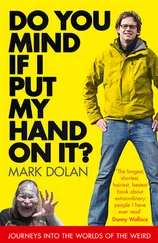Robert Monroe - Journeys out of the body, Practical Guidebook
Здесь есть возможность читать онлайн «Robert Monroe - Journeys out of the body, Practical Guidebook» весь текст электронной книги совершенно бесплатно (целиком полную версию без сокращений). В некоторых случаях можно слушать аудио, скачать через торрент в формате fb2 и присутствует краткое содержание. Жанр: Старинная литература, на английском языке. Описание произведения, (предисловие) а так же отзывы посетителей доступны на портале библиотеки ЛибКат.
- Название:Journeys out of the body, Practical Guidebook
- Автор:
- Жанр:
- Год:неизвестен
- ISBN:нет данных
- Рейтинг книги:5 / 5. Голосов: 1
-
Избранное:Добавить в избранное
- Отзывы:
-
Ваша оценка:
- 100
- 1
- 2
- 3
- 4
- 5
Journeys out of the body, Practical Guidebook: краткое содержание, описание и аннотация
Предлагаем к чтению аннотацию, описание, краткое содержание или предисловие (зависит от того, что написал сам автор книги «Journeys out of the body, Practical Guidebook»). Если вы не нашли необходимую информацию о книге — напишите в комментариях, мы постараемся отыскать её.
Journeys out of the body, Practical Guidebook — читать онлайн бесплатно полную книгу (весь текст) целиком
Ниже представлен текст книги, разбитый по страницам. Система сохранения места последней прочитанной страницы, позволяет с удобством читать онлайн бесплатно книгу «Journeys out of the body, Practical Guidebook», без необходимости каждый раз заново искать на чём Вы остановились. Поставьте закладку, и сможете в любой момент перейти на страницу, на которой закончили чтение.
Интервал:
Закладка:
During sleep paralysis, it is impossible to scream, call for help, or even move a finger. In the majority of cases, it is also impossible to open the eyes. From a scientific point of view, this is a case of an abrupt, unnatural interruption of the rapid eye movement (REM) phase of sleep, during which this paralysis is always present, and it can persist for some time after the phase is interrupted.
This is where it gets interesting. People in the physical world are accustomed to an important rule: if you wish to achieve something, then do it, and do it as actively as possible. This rule, though good, is not always applicable to certain conditions linked to the phase, and applies least of all to exiting the phase. Sometimes extreme effort makes it possible to break through sleep paralysis and resume movement, though most of these efforts tend to exacerbate immobility.
Due to the unusual nature of a negative situation following a deliberate, fear-induced return to the body, the depth of the phase may greatly increase because of the body’s natural, protective inhibition of functions originating in the cerebral cortex; this results in even greater agitation, greater fear. The paralysis grows stronger.
This is a vicious circle that leads to unpleasant feelings and emotions, which may evaporate any desire to practice the phase.
Ignorance of correct procedures has led to the widespread opinion that such adverse situations may make it impossible to come back from the phase at all. These opinions suppose that it is, therefore, dangerous to get involved with the practice. However, the solution to this problem rests in very simple actions and procedures that can prevent a large number of negative experiences:
Complete Relaxation
In the section on deepening and maintaining, it was noted that the more active a practitioner is while in the phase, the better.
Conversely, if there is less activity, the quality of the phase declines, allowing for an easy exit. Thus, in order to leave the phase, the practitioner only needs to completely relax and ignore any perceived sensations, actions, or thoughts. A practitioner may also recite a prayer, mantra, or rhyme, since that helps the consciousness to be distracted from the situation more quickly. Of course, one needs to calm down and try to get rid of the fear, which in and of itself is capable of keeping such a state going. Periodically, the practitioner should try to move a finger in order to check whether attempts at relaxation have had an effect.
Concentration on a Finger
A practitioner experiencing sleep paralysis should try moving a finger or a toe. At first this won’t work, but the practitioner has to concentrate precise thought and effort on the action. After a little while, the physical finger will begin to move. The problem with this technique is that the practitioner may accidentally start making phantom motions instead of physical movements, which is why an understanding of the difference between the two sensations is necessary, since it is often not very obvious.
Concentration on Possible Movements
The physiology of sleep paralysis, the phase state, and dreams are such that when the practitioner is in one of these states, some actions are always associated with movements made in the real body. This is true when moving the eyeballs, the tongue, or while breathing. If the practitioner concentrates attention on these processes, it is possible counteract inhibitions to physical movement; as a result, a sleep-paralyzed practitioner will become able to move in reality.
Reevaluating the Situation
Under normal circumstances, deliberate exit from the phase is not the norm. Deliberate exit is commonly caused by certain fears and prejudices. If a practitioner is not able to activate the body using other emergency return techniques, a careful consideration the possibilities offered by the phase is recommended. There are many interesting and useful things that can be experienced in the phase.
Why ruin the possibility of great opportunity because of a baseless fear?
To be fair, it must be noted that emergency exit techniques do not always work. As a rule, after a long period of sleep deprivation, or at the beginning of or in the middle of a night’s sleep, the urge to sleep is so great that it is difficult to resist the sleep paralysis phenomenon.
In this respect, reevaluating the situation is highly recommended so that a practitioner is able to take advantage of the situation versus suffering by it. Sleep paralysis is easily transmuted into a phase state by means of indirect techniques.
By the way, knowing how to exit paralysis is important not only for practitioners of the phase, since such paralysis occurs even without the phase for approximately one-third of the human population at least once in a lifetime. It usually happens before or after sleep.
FIGHTING FEAR
Fear in the phase is a very common occurrence. The practitioner may experience fear at any stage, although it is expressed much more clearly during initial practice. The causes of fear are very diverse: a feeling that returning to the body is impossible; a fear of death; worrying that something bad is going to happen to the body; encountering something scary and terrible in the phase; painful sensations; overly sharp, hyper-realistic sensations. One fear dominates all others: the instinct of self-preservation, which, without any apparent reason, can induce a feeling of absolute horror – a feeling that cannot be explained or controlled.
For a novice stricken by insurmountable fear that causes paralysis, there is only one way to gradually overcome. Each time a novice enters the phase, an attempt should be made to go a step further than the previous time. For example, in spite of feeling terrified, the practitioner should try to raise the hands and then move them back to the initial position. The second time, the practitioner should attempt to sit down. The third time, standing up should be attempted. The fourth time, walking around in the phase is advised.
Then, after incremental steps toward experiencing the harmlessness of the phase state, productive, calm action may ensue.
Interesting fact!
Fear itself can be used to enter the phase and remain there for a long time. Once fears are allayed, a calmed practitioner is experiences increased difficulty with entry into the phase.
For a practitioner who faces periodical fears, realizing that there is no real danger encourages progress in practice. Urges to rapidly return to the body are then made baseless. Sooner or later, calmer thought dominates events in the phase, and fear happens less often.
When dealing with momentary fear caused by events in the phase, the simplest solution is to tackle it head-on and follow through to the end in order to avoid a fear-driven precedent. If a practitioner always runs away from undesirable events, the events will occur more and more frequently. If a practitioner is incapable of facing fear in the phase, it is best to use the translocation technique to travel elsewhere, although this solution only produces temporary relief.
CREATION OF VISION
Vision is often available at the very beginning of a phase, especially when the practitioner uses image observation and visualization techniques to enter. Sometimes vision appears within the first few seconds. Other times, it manifests during the deepening process. However, there are cases where vision is not available and must be created quickly, at any cost. Vision may arrive as soon as it is thought about, but if this does not occur, a special technique is necessary.
To create vision, a practitioner needs to bring the hands four to six inches in front of the eyes and try to detect them through the grayness or darkness. Peering aggressively and attentively at the minute details of the palms will cause them to appear, much like they are being developed on Polaroid film. After several seconds, vision will become clear, and along with the palms, the surroundings will also become visible.
Читать дальшеИнтервал:
Закладка:
Похожие книги на «Journeys out of the body, Practical Guidebook»
Представляем Вашему вниманию похожие книги на «Journeys out of the body, Practical Guidebook» списком для выбора. Мы отобрали схожую по названию и смыслу литературу в надежде предоставить читателям больше вариантов отыскать новые, интересные, ещё непрочитанные произведения.
Обсуждение, отзывы о книге «Journeys out of the body, Practical Guidebook» и просто собственные мнения читателей. Оставьте ваши комментарии, напишите, что Вы думаете о произведении, его смысле или главных героях. Укажите что конкретно понравилось, а что нет, и почему Вы так считаете.










